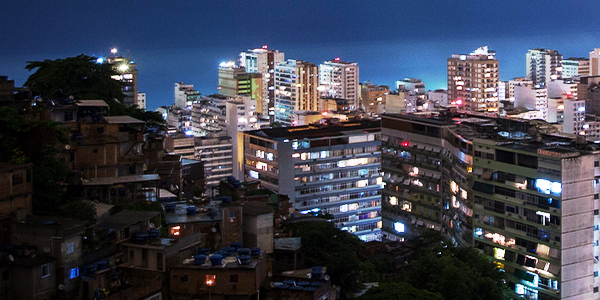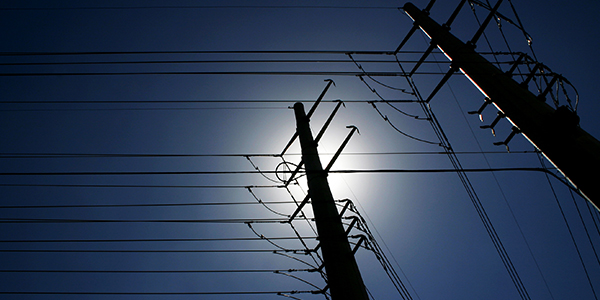INNOVATE
Industry Updates
Micro-grids: Powering Asia's growth story
Erratic power supply has often caused Asia’s economic growth to hit speed bumps. Find out how A*STAR- through Institute for Infocomm Research (I2R) and Experimental Power Grid Center (EPGC) – the region’s largest experimental power grid center – can help companies develop next-generation micro-grid technologies.

On July 2012- 670 million people were left in the dark when three of India’s five power grids collapsed. The source of the outage- the world’s largest to-date- was quickly identified – inadequate energy supplies across the grid forced several states to draw excess electricity to meet demand.
South Asia has one of the highest number of power outages per year. However- energy shortages exist elsewhere. Seven in 10 people in Myanmar and Cambodia still live without electricity . This presents a challenge and opportunity for companies looking at entering the energy market in Asia- where rapid economic growth drives insatiable energy consumption.
Micro-grids bridge power gap

As a clean- virtually inexhaustible source of energy- solar energy has been touted as a possible solution for Asia.
Despite its potential- solar energy still remains an intermittent energy source- which fluctuates during heavy cloud cover- rainfall- and disappears at night. Power grids need a stable balance between electricity generation and load demand – an overload or under-supply of energy can threaten grid stability- deteriorate power quality and cause power outages.
Micro-grids can help to bridge this gap in grid stability and resilience. They could be independent island grids that supply power to off-takers from both renewable and conventional (e.g. diesel) energy sources. They can export power to the main grid when there is energy surplus. In times of main grid failure- they can also separate themselves from the main grid to maintain stable power supply.
Micro-grids can also power remote islands that were previously geographically impossible – or too expensive – to link with a main grid. This positions micro-grids as the ideal solution to power up countries that need stable utility-quality electricity to keep up with their fast-paced economic development.
Testing micro-grid solutions in real-time
WEnergy Global- a Singapore-based SME in the renewable energy sector- saw the opportunity of developing a micro-grid to power up the Sabang Underground River Area – a prominent tourist destination in the Philippines’ Palawan Island.
The area is isolated from the main grid in Palawan- which is fully powered by heavy-diesel generators. WEnergy Global is about to commence construction of a hybrid micro-grid worth approximately US$9 million . It has a capacity of 1.4 megawatt-peak (MWp) generated from solar PV power- a 1.2 MW diesel generators- as well as a battery storage system of 2.3 MWh .
In 2013- WEnergy Global partnered with A*STAR’s Experimental Power Grid Center (EPGC)- which has strong expertise in micro-grid and intelligent power system design and development- to analyze and refine its micro-grid components and system design through simulations.
The company also made use of EPGC’s facilities housed on Jurong Island – currently the largest experimental grid facility in this part of the world – to run simulations- analyze grid operations and test the limits of grid stability.
Unlike smaller lab setups or simulations- the 1-megawatt (MW) experimental grid in EPGC is a fully functional power system- which enables companies to test their solutions and validate their expectations in a real-life environment. The facility also has emulators that can simulate wind or solar conditions in any part of the world- and replicate the behavior and performance of renewable energy sources.
WEnergy Global’s Chief Executive and Founder Mr. Atem R. Ramsundersingh said that EPGC not only had the right expertise in solar power and energy management- but was also willing to negotiate contract and payment terms to suit the company’s budget and vision.
"This project wouldn't have been possible from a price-and-profit perspective if I had bought the parts from big companies- which may not be aware of the off-grid challenges in rural Asia- including the interface between regulatory frameworks and deployment of new technologies. It would have been like buying a Rolls Royce when all I needed was an e-bicycle-" he said.
Meanwhile- WEnergy Global secured a second contract for a hybrid power plant on two Palawan islands that are worth USD 15 million. WEnergy Global has also developed a portfolio of such micro-grid and hybrid projects worth USD 250 million which will be executed in the coming years.
Test-bed for smart grid infrastructure
Other companies such as Narada Asia Pacific are working on developing smart grid solutions which can support new applications such as electric vehicle charging.
This is not surprising- given that the global cumulative smart grid market is expected to surpass $400 billion worldwide by 2020.
Southeast Asian countries are expected to invest $13.6 billion in smart grid infrastructure between 2014 and 2024.
Narada Asia Pacific approached A*STAR’s Institute for Infocomm Research (I2R) in 2014- to explore how it could develop an integrated micro-grid system that combines solar photovoltaic energy generation with its REXC lead-carbon batteries. They eventually partnered on a joint-venture project- the Residential Photovoltaic Energy Storage System (PV ESS)- together with the Singapore Housing Development Board & (HDB) and Singapore Power.
A complete micro-grid system was set up on the rooftops of selected HDB flats in Ang Mo Kio. Solar PV panels generated electricity for the flats- while Narada’s REXC lead-carbon battery served as a backup power source that supplied power and regulated electricity conversion and flow to the grid.
According to Narada’s director- Mr. Peter Ng- this joint-venture allowed the companyto access I2R’s solutions in advanced energy data analytics- complex system modelling and optimization technologies. I2R also helped to bring in partners like HDB and Singapore Power- providing test-bedding opportunities in actual scenarios.
The project has since sparked business opportunities for Narada locally and regionally- and provided a deployable solution that can be replicated in other Asian countries where stable utility grids are crucial to economic growth.
Micro-grid: A game-changer for renewable energy

With increased energy demand across the region and high environmental costs associated with fossil fuel usage- investing in micro-grid innovation is a viable route for companies to tap the vast potential of renewable energy.
Companies looking to harness the potential of micro-grids can approach EPGC or the recently launched A*STAR Industrial Smart Grid Consortium. Under the Consortium- companies can work bilaterally with A*STAR to leverage the technological capabilities of its research institutes to conduct research and development.
For more information on partnering A*STAR on micro-grid solutions- please contact:
- Mr Alex Chong- Senior Manager- EPGC (alex_chong@epgc.a-star.edu.sg)
- Dr Murali- Deputy Head (Industrial Smart Grid Consortium- ISGC) (Mparam@i2r.a-star.edu.sg)
- Dr Henry Wong- Head (Smart Energy & Environment Department- I2R) (henry-wong@i2r.a-star.edu.sg)
Was the article helpful?
A*STAR celebrates International Women's Day

From groundbreaking discoveries to cutting-edge research, our researchers are empowering the next generation of female science, technology, engineering and mathematics (STEM) leaders.
Get inspired by our #WomeninSTEM
